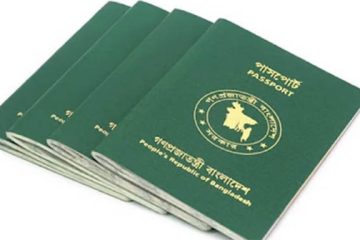One crore Bangladeshis move above $1.25 a day between 1990-2008, finds a survey of an int’l advocacy group
The country’s 18 lakh microcredit borrowers — nearly a crore with their family members — moved above the $1.25 a day earning threshold between 1990 and 2008, according to an international advocacy group.
In 2008, the World Bank came out with a revised figure of income at $1.25 per day as the standard poverty line. Previously it was $1 as per day.
A survey of about 3,620 households, led by economist Sajjad Zohir, director of Dhaka-based non-profit Economic Research Group, found that a dramatic number of families moved up the hardcore poverty line between 1990 and 1997.
However, the devastating flood in 1998 and food and fuel crisis in 2008 caused hundreds of thousands of families to fall below the earning mark.
Even with these setbacks, on an average nearly one crore people rose above poverty line, according to a report by Microcredit Summit Campaign, a programme of the US-based advocacy group RESULTS Educational Fund.
The findings are quite contrary to political and non-political critics’ claims that the initiative, championed by Nobel Laureate Muhammad Yunus, has failed to deliver and pull people out of poverty in a country where about 40 percent of 16 crore people live on less than a dollar each day.
The report of the Microcredit Summit Campaign closely reflects the findings of official country-level research in Bangladesh with the national Household Income and Expenditure Survey (HIES) that estimated 1.062 crore Bangladeshis languishing under the poverty line between 1990 and 2005.
Zohir said their estimate seems quite in line with the national level findings.
He said the study however made no attempt to establish causality between microcredit and poverty alleviation. Instead, it simply estimated the change in the status of microcredit-client households during the time — before and after any family member received the first loan.
“While the survey for Bangladesh was not designed to assign causality, it is very significant that the number of successful micro-finance clients closely links to the national data on poverty reduction,” said Sam Daley-Harris, director of Microcredit Summit Campaign, in a statement of the organisation.
‘The majority of poverty cases in Bangladesh is in rural areas and so are the majority of micro-finance clients,” he said.
The survey report came at a time when the microcredit sector is under pressure in Bangladesh, its origin, and the rest of the world.
In Bangladesh, politicians, particularly of the ruling party, and many economists and experts censured micro-finance practices, with the prime minister accusing micro-lenders of “sucking blood of the poor”.
In India, micro-lenders are now struggling to survive after a crackdown in the state of Andhra Pradesh, where the authorities accused the lenders of seeking hyper-profit from the poor through high interest rates and coercive debt collection tactics.
There are quite a few people who believe that micro-finance has lost its way,” said Alex Counts, president of Grameen Foundation, adding, “This survey on Bangladesh reminds us that even in the most difficult circumstances, major progress can be made.”
He said Bangladesh is not the “bottomless basket” as it was termed 35 years ago by the then US secretary of state Henry Kissinger. It is instead a teacher to the rest of the world with its civil society leading the way, he added.
The survey was conducted at 72 villages under 36 districts in four divisions between February and August 2009. It included a large number of clients of Brac and Grameen Bank.
Of the households surveyed, 94 percent were in non-metropolitan areas and six percent in metropolitan slums.
The study said in some years a large percentage of clients came out of poverty, but in years coinciding with the floods in 1998 and food and fuel crisis in 2008 many households, including those which were not as poor when they joined microcredit, slid below the $1.25 earning threshold.
Sajjad Zohir said timing is also important. “People taking loans in the early and mid 90s have moved up the ladder than those who received loans after the floods. We have even found negative growth after the flood.”
The economist said people should consider the contribution of micro-financers in education, health and insurance sectors rather than seeing them as lender agencies.
He, however, said there are room for improvement. “The microcredit organisations cannot continue the way they are operating, or else there will be a decline in its progress. They must be allowed to mobilise funds on their own rather than depending on bank loans at high interest rates,” Zohir told The Daily Star yesterday.
Launched in 1997, the Microcredit Summit Campaign committed to creating the will to eliminate poverty. In 2007 surpassed its original goal of reaching 10 crore poorest families with credit for self-employment and other financial and business services.
In Bangladesh, about 1,200 micro-lenders, including government institutions, banks and charities, have around Tk 15,000 crore in outstanding loans to some 3 crore borrowers.




















